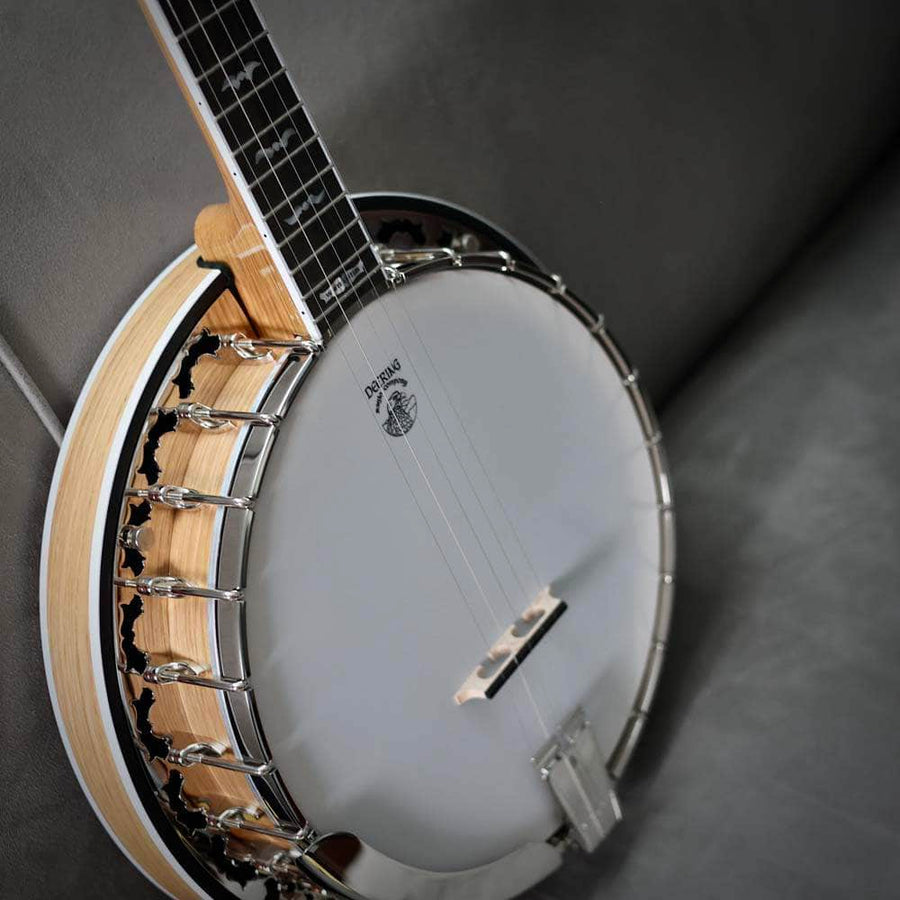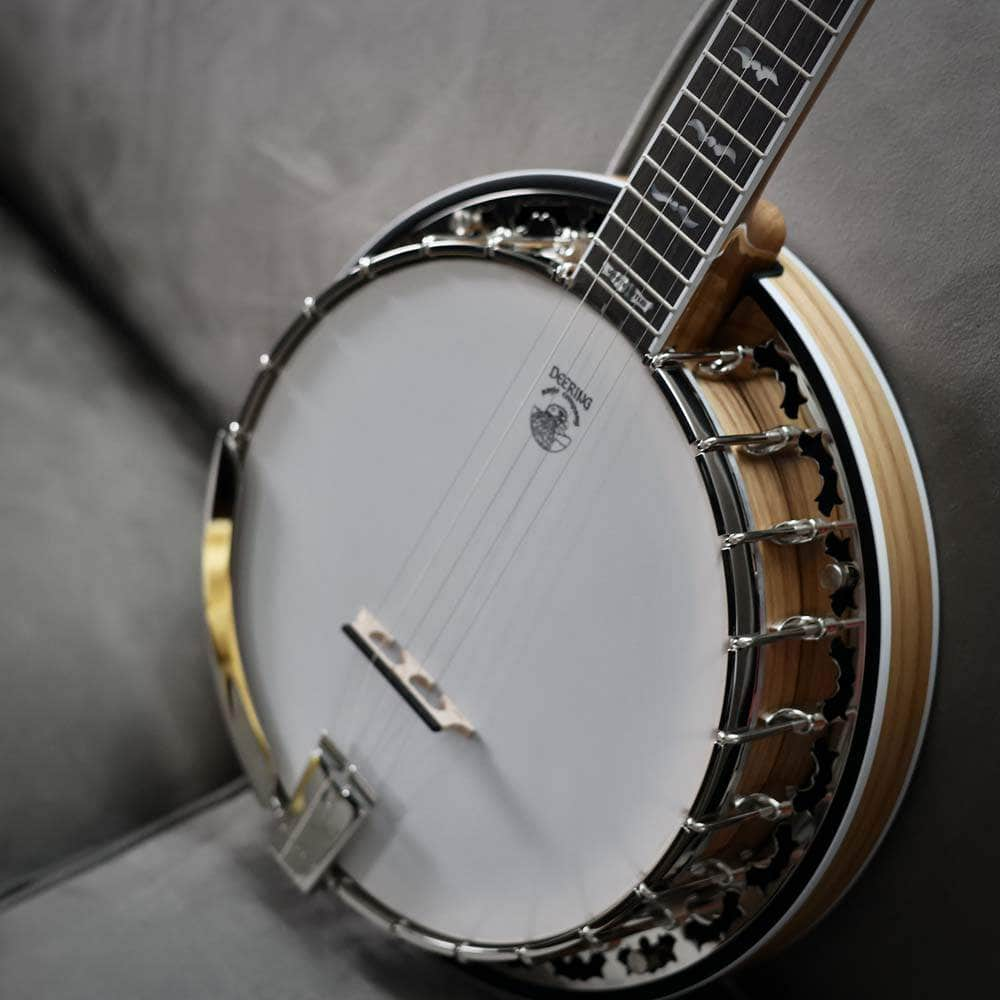Adirondack Spruce vs. Sitka Spruce: Acoustic Guitar Buying Guide
When it comes to high-end acoustic guitars, the top of the guitar (the soundboard), often made of spruce, plays a crucial role in shaping the instrument's voice. Two popular choices for this prized piece are Adirondack and Sitka spruce, each boasting distinct characteristics that resonate with different playing styles and tonal preferences. If you're on the hunt for your dream acoustic, deciphering the nuances of these two tonewoods can be the key to finding the perfect match.
Adirondack Spruce: The Vintage Voice
Imagine the warm, rich tones of a legendary PreWar Martin from the 1930s. That's the magic of Adirondack spruce. This wood boasts a tighter grain structure, resulting in a bolder, more articulate sound with a pronounced midrange and powerful projection. It excels in genres like bluegrass and fingerstyle, where its responsiveness and headroom shine. However, its limited availability and higher cost make it a premium choice. Guitars from brands like Collings and Martin often utilize this tonewood for its vintage-inspired character.
- Brighter, punchier sound: Adirondack projects with a pronounced attack, perfect for bluegrass and fingerstyle playing.
- Stronger headroom: It handles aggressive strumming without sacrificing clarity, making it a favorite for flatpickers.
- Maturation potential: Like fine wine, Adirondack guitars age beautifully, developing richer, more complex tones over time.
Adirondack spruce, with its captivating vintage voice, holds a special place in the hearts of many acoustic guitar enthusiasts. Let's dive deeper into the size, availability, and unique characteristics of this prized tonewood.
The Giants Once Stood Tall:
Historically, Adirondack spruce trees in the northeastern United States reached colossal heights, often exceeding 100 feet and boasting diameters surpassing 3 feet. These "old-growth" giants were the source of the coveted tonewood used in legendary pre-WWII acoustic guitars. Their tight grain structure, a result of slow, natural growth over centuries, contributed to the wood's exceptional sonic properties.
Unfortunately, extensive logging in the late 19th and early 20th centuries significantly depleted the population of old-growth Adirondack spruce. Today, the majority of trees used for guitar soundboards are classified as "second-growth," meaning they originated from seeds planted after the logging era.
Second-Growth: Smaller, but not Lesser:
While second-growth Adirondack spruce trees are undoubtedly smaller than their ancient predecessors, typically reaching heights of 60-80 feet and diameters of 1-2 feet, they still possess the potential for exceptional sound. Modern sustainable forestry practices are crucial in ensuring the responsible harvesting of this precious resource.
Availability: A Balancing Act:
The limited availability of Adirondack spruce directly impacts its price. Due to its slow growth rate and historical depletion, it remains a rare and valuable tonewood. While some guitar builders have access to limited stocks, others may choose to use it sparingly or reserve it for their high-end models.
Beyond Size: Tonewood Secrets:
It's important to remember that the size of the tree isn't the sole determinant of sound quality. Factors like the specific growing conditions, milling techniques, and the individual piece of wood itself all play a significant role in shaping the final tone.
Sitka Spruce: The Versatile Performer
Think of Sitka spruce as the all-rounder of the acoustic world. Its wider grain structure creates a warmer, more balanced sound with a touch of sweetness. It's incredibly versatile, adapting well to various playing styles and genres, from strumming folk tunes to fingerpicking intricate melodies. Sitka is more readily available than its Adirondack counterpart, making it a popular choice for guitar builders. Its affordability and well-rounded character are perfect for players seeking a guitar that excels in diverse sonic landscapes.
Abundance and Sustainability:
Sitka spruce boasts a wider geographic distribution, stretching from Alaska down the Pacific Coast to California. This, coupled with more sustainable forestry practices, ensures a steadier supply compared to the limited availability of Adirondack spruce.
Adaptability and Warmth:
Sitka's wider grain structure translates to a warmer, more balanced tone with a touch of sweetness. This sonic character makes it adaptable to various playing styles and genres, from strumming folk tunes to fingerpicking intricate melodies. Its versatility resonates with players who desire a guitar that excels in diverse musical landscapes.
Cost-Effectiveness:
The wider availability of Sitka spruce translates to lower costs compared to Adirondack. This makes it a more accessible option for guitar builders and players seeking a high-quality soundboard without breaking the bank.
Sitka spruce's abundance, balanced tone, and adaptability make it a popular choice for modern acoustic guitars. It's a versatile performer that caters to diverse playing styles and budgets. While Adirondack spruce offers a distinct vintage voice, Sitka remains the accessible champion, continuously evolving and inspiring guitarists and builders alike.
The Ultimate Choice: It's Personal
Ultimately, the "better" spruce comes down to your individual preferences. Consider the following:
- Playing style: Adirondack shines in aggressive strumming and fingerstyle, while Sitka's versatility suits various genres.
- Tonal preference: Do you crave the vintage punch and clarity of Adirondack or the balanced warmth of Sitka?
- Budget: Adirondack's rarity often translates to a higher price tag.
Bonus Tip: Don't underestimate the power of trying different guitars in person. Visiting a reputable guitar store and immersing yourself in the sonic nuances of each instrument will guide you towards your dream acoustic.
I hope this helps you find your dream acoustic guitar!











Leave a comment